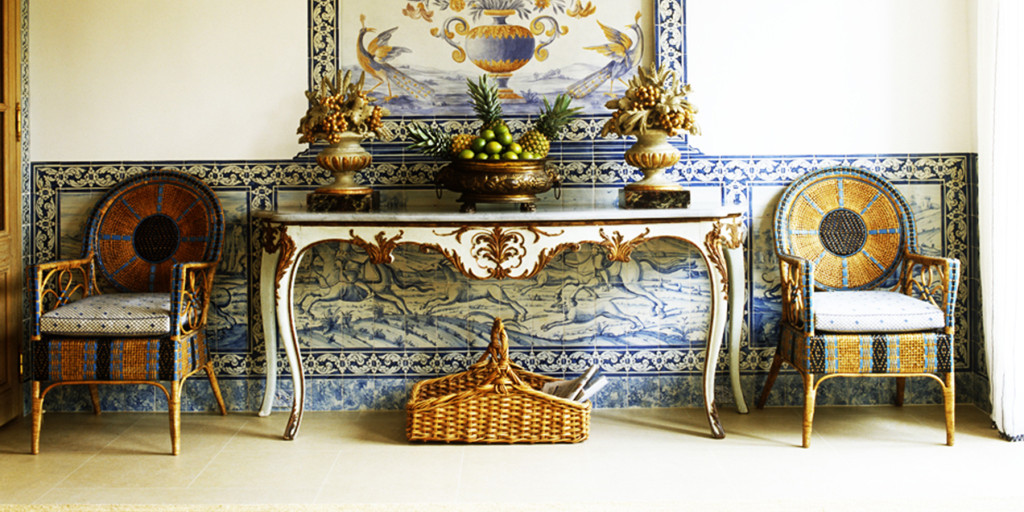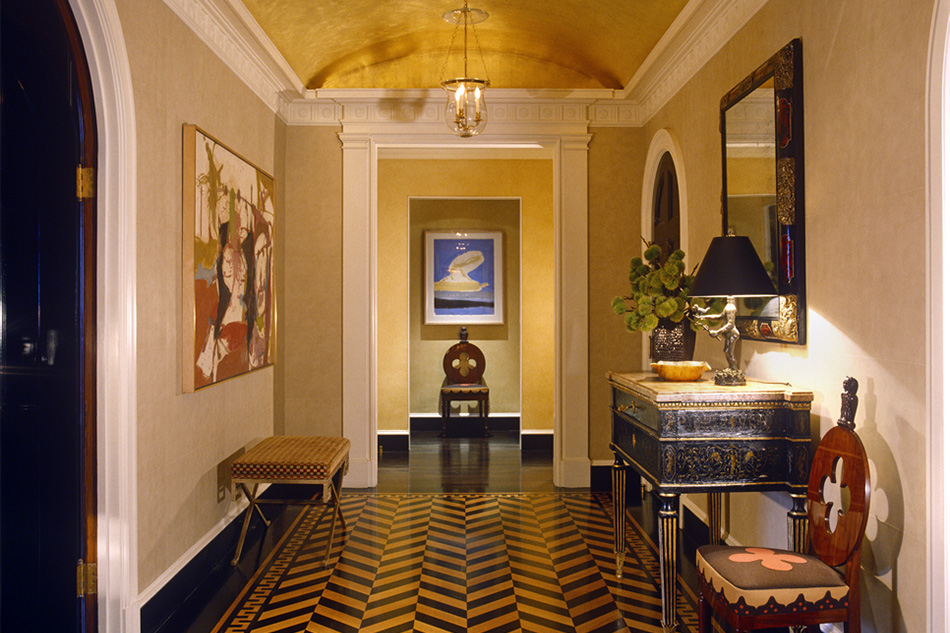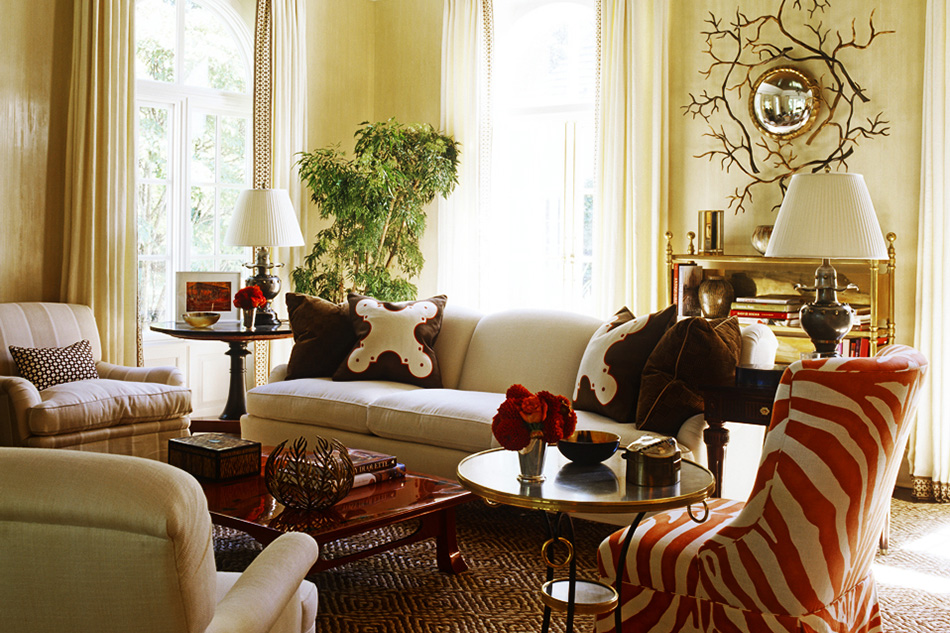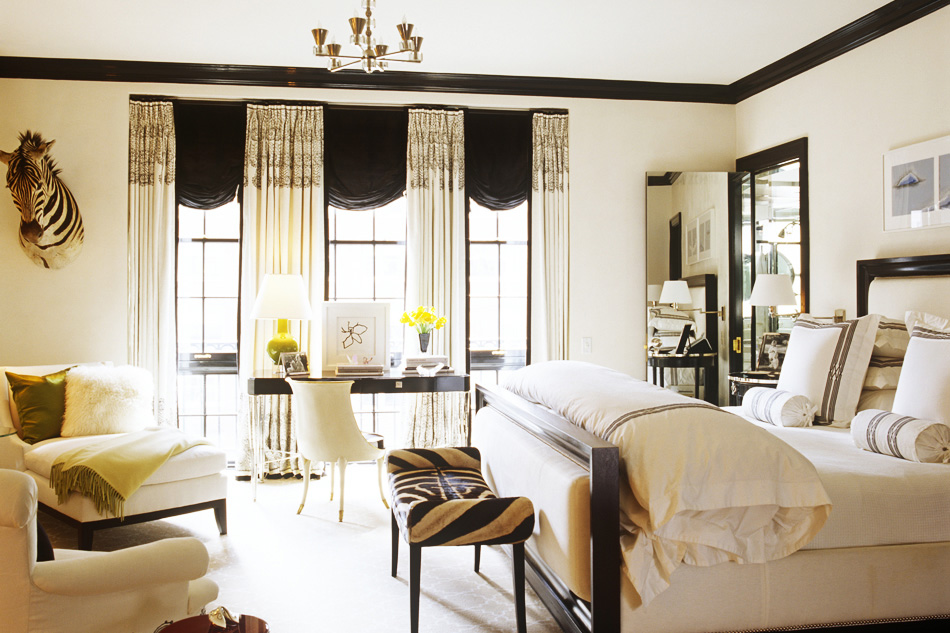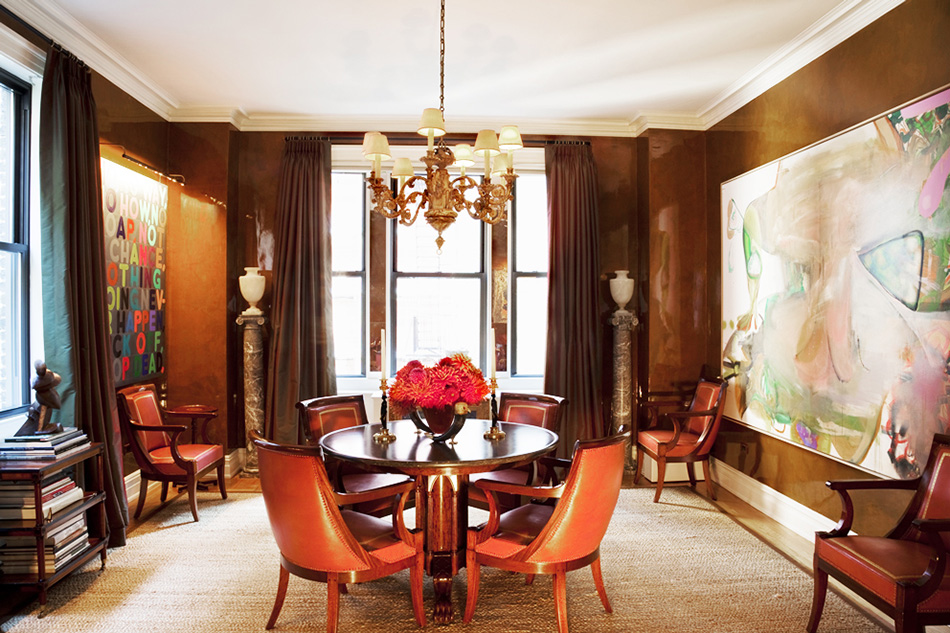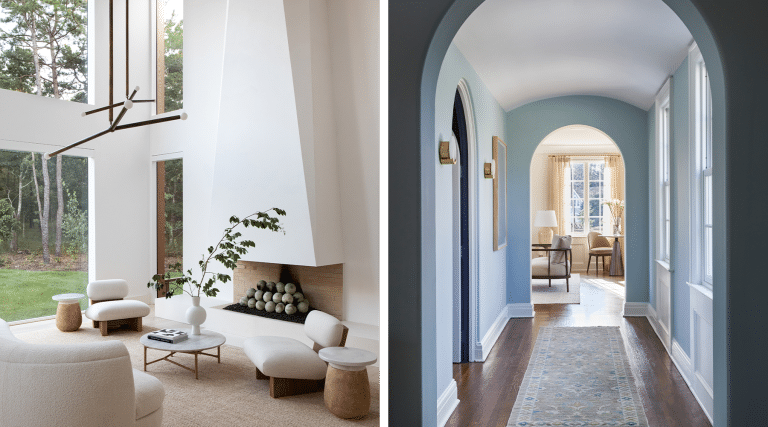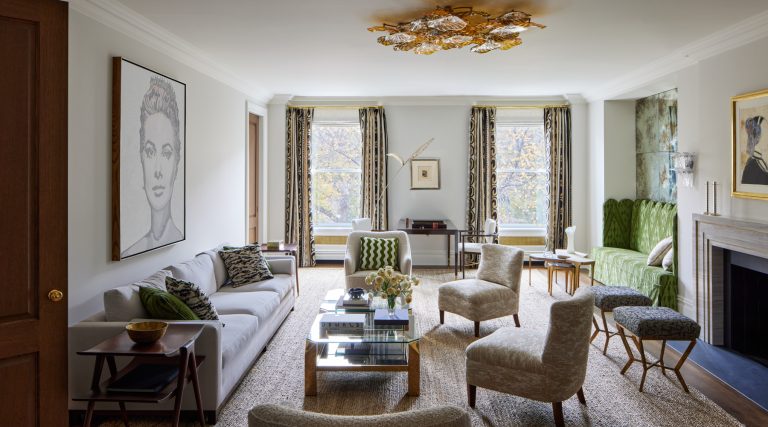
August 8, 2012Top: Known for his dedication to craftsmanship, designer Brian J. McCarthy spent five years on a veranda in an Atlanta townhouse, festooning it with custom Portuguese tiles and a panel that slides away to reveal a flat screen television. Of his classical style, which he refined at Parish-Hadley, McCarthy says, “I’ve never given up the Parish-Hadley philosophy.” Photos by Fritz Von Der Schulenburg
Interior designer Brian J. McCarthy doesn’t pay a lot of attention to shelter magazines. He does not attend trade shows or keep a calendar generously sprinkled with design soirées. Unlike many decorators, he is not flashy. “I can be inspired by fashion,” he says, “but I’m not about living in Prada.”
McCarthy’s much-lauded participation in the 2012 Kips Bay Decorator Show House, in fact, was a rare foray into the public eye. He only did it, he says, in tribute to his beloved mentor Albert Hadley, collaborating on the living room with two other alumni of the vaunted interiors firm Parish-Hadley: Bunny Williams and David Kleinberg.
“I’m not social in the industry or market per se,” admits the 51-year-old McCarthy, who has clean-scrubbed, ruddy-cheeked Irish boy looks and eyes so bright they appear phosphorescent. “I’m in my own world.”
The designer speaks from behind a desk in his handsome offices, which feature 20-foot ceilings and towering windows, all in a historic building a few doors down from Manhattan’s Carnegie Hall. Across from him sits Danny Sager, 50, his companion and business partner of 10 years. “Our clients are not interested in being published, which keeps Brian under the radar,” observes Sager. “What really excites him most is a client who wants to be involved, who has a point of view.”

The dining room of a different Atlanta house reveals McCarthy’s appreciation for Old World, European-inspired grandeur.
Among the diverse points of view McCarthy has interpreted into the highly personal interiors he creates are those belonging to such high-profile clients as Robert Tuttle, Ambassador to the Court of St. James’s, and his wife, Maria; the Blackstone Group’s Stephen A. Schwartzman and his wife, Christine; and NFL commissioner Roger Goodell and his wife, Jane. The projects’ typologies are equally diverse, ranging from an intimate, lushly appointed New York pied-à-terre to a palatial estate in Gstaad that features a warren of subterranean wine cellars and an indoor pool surrounded by verdant walls planted by famed vertical gardener Patrick Blanc. (Through the skylight overhead, bathers glimpse more gardens by Belgian landscape firm Wirtz International, a favorite collaborator of McCarthy’s.)
It never hurts, of course, to possess a Parish-Hadley pedigree. And McCarthy’s rooms bear many of the eminent firm’s hallmarks: interiors that mix an erudite grounding in classical styles (usually 17th- to 19th-century English and French) with contemporary genres; bold modern art that brings graphic punch to more traditional spaces; and an intrepid, idiosyncratic spirit that nevertheless values subtlety and taste over glamour and ephemeral statement. “I’ve never given up the Parish-Hadley philosophy,” he says. “There was something practical and sensible and beautiful about what we did, and it definitely influenced my own taste.”
But McCarthy’s clients come to him for more than that. When asked how he has evolved from his Parish-Hadley days — he opened his own firm in 1991 — McCarthy doesn’t hesitate: “An insane level of detail in the background,” he says, referring to the international artisans he works with on a regular basis to create ambitious and sophisticated finishes for all of his projects. “For the last fifteen years, I’ve immersed myself in French culture and all the workshops there. We have excellent artisans, and we work with wonderful craftsmen here, too.”

A room in McCarthy’s New York office features a chandelier by Patrice Dangel, a bookcase created by the designer himself and conference tables and chairs by Vosges Inc.
These Old World–style ateliers conjure plaster surfaces engraved to resemble Kuba cloth, handmade panels inset with leather and rimmed in Palladian silver leaf, carved Rateau-esque wall reliefs, jewel-like églomisé, labor-intensive Chinese lacquers and book-matched zebra carpets.
“I’ve watched Brian for ten years and still always think, ‘When do you get to the decorating?’ ” kids Sager. “I’m amazed at how much time he spends working on the architecture of a room.”
McCarthy was born in Maryland to a social worker mother and a naval architect father who built atomic submarines. “They are nomads when it comes to travel, and that absolutely informed my work,” he says. “They will ride a camel if it will get them to a historic site they can’t otherwise reach. My sisters and I got dragged around to all the great cathedrals of Europe kicking and screaming.”
Today, that peripatetic spirit manifests itself in the designer’s globally referenced interiors, but as a child all the perpetual motion drew McCarthy inward. Being in his “own world,” in other words, is actually nothing new for him. This was a boy who focused on his equestrian skills and quietly absorbed the eclectic surroundings of his family’s mock-Tudor home — Danish modern furniture juxtaposed with Japanese, Korean and Chinese pieces, carpets from Turkey, Morocco and Uzbekistan. On visits to his maternal grandmother in Upper Montclair, New Jersey, he would roam her Georgian-style rooms sketching hardware on 18th-century American furniture.

“I’m not social in the industry or market per se,” says McCarthy, seen here in his New York office. “I’m in my own world.”
“I was obsessed with painting and drawing,” explains McCarthy, so rather than attend a prestigious liberal arts school, as was his parents’ hope for him, McCarthy headed to the Pratt Institute, in Brooklyn, with industrial design on his mind. But as he met people in interior design, he says he realized “there was something more spontaneous about what they did. I knew immediately it was for me.” It was a certainty that Hadley, who hired him as his assistant straight out of school, must have noted. But even as a rising star in the firm, McCarthy never cultivated the hustle and outsized personalities of some of his colleagues. He has no airs, and one detects he prefers to work with quiet passion.
Few know, for example, that a Paris-based handcrafted furniture and lighting house called Vosges Inc. does some of the highest-end custom work for world-class designers like Robert Couturier, Thierry Despont, Pablo Molineux and Alberto Pinto. But fewer still know that Vosges was actually established by McCarthy and two partners in 2003, the result of McCarthy’s immersion in the artisan culture of France.
Despite his reticence about publicity, a popular shelter magazine has just photographed the couple’s country home in Ulster County, New York, for a future issue. Yet it’s doubtful that McCarthy will ever be ubiquitous in the way of a Zaha Hadid, Jacques Grange or Peter Marino, all of whom he cites as inspirations. Instead, McCarthy prefers to hone his personal style, which he says is becoming more modernist and reductive, in relative obscurity. “I like relying on my own life to inspire what I do,” he says without a hint of hubris. In that way, his “own world” continues to make its way, resplendently, into ours.
